photo diary: how to hit 30g fiber a day without metamucil
I photographed my meals for 2 years to show you how
If you follow me on Instagram, you've probably seen my daily meal photos—visual proof that hitting your fiber targets doesn't require supplements or boring salads. Rather than relying on fiber powders or pills, I create satisfying meals using fiber-rich whole foods that support both gut health and blood sugar stability.
These aren't complex recipes—they're simple "assembled" meals using quality pantry staples, fresh vegetables, nuts, seeds, legumes, seasonal produce, as well as frozen berries and veggies.
Evidence-Based Fiber Strategy
My approach follows specific, science-backed targets that work:
Fiber: Minimum 10 grams per meal (30+ grams daily) for optimal gut health, blood sugar regulation, and toxin elimination
Protein: 25-30 grams per meal to support satiety and muscle maintenance alongside fiber-rich foods
Plant Diversity: At least 30 different plant foods weekly—the easiest way to naturally increase fiber while feeding beneficial gut bacteria
Fermented Foods: Daily inclusion of sauerkraut, kimchi, fermented vegetables, or yogurt for additional gut support
Healthy Fats: Nuts, seeds, avocado, and extra virgin olive oil to enhance nutrient absorption and satisfaction
My Fiber Philosophy: Feed Your Microbiome
My core approach is simple: every meal should feed the beneficial bacteria in your gut while providing sustained energy and satisfaction. This means prioritizing fiber from whole food sources that come packaged with vitamins, minerals, and protective compounds, not fiber supplements.
I focus on fiber diversity through:
Vegetables as the foundation—filling at least half my plate with non-starchy vegetables that provide both soluble and insoluble fiber
Nuts and seeds—hemp hearts, basil seeds, chia seeds, ground flax, and almonds for concentrated fiber plus healthy fats, adding crunch, satisfaction, and fiber to every meal (have you tried my super seed sprinkle yet?)
Legumes in moderation—beans and lentils for plant protein paired with exceptional fiber content
Berries over other fruits—nature's fiber-rich antioxidant powerhouses with minimal blood sugar impact
Avocados—nearly 10 grams of fiber per medium avocado, plus heart-healthy monounsaturated fats
Fermented vegetables—sauerkraut and kimchi for probiotic benefits plus additional fiber
Microgreens and sprouts—concentrated nutrition and fiber in tiny packages
The Benefits of Fiber-Rich Eating
When you prioritize fiber from whole food sources, amazing things happen:
Blood sugar stays stable—fiber slows glucose absorption and prevents spikes
Satiety increases naturally—you feel full and satisfied without overeating
Gut health improves—beneficial bacteria thrive on diverse fiber sources
Energy becomes consistent—no more afternoon crashes from blood sugar swings
Cravings diminish—properly fed gut bacteria don't drive sugar cravings
Beyond the Numbers
This isn't about obsessing over fiber grams—it's about creating an eating pattern that naturally provides what your body needs. When you fill your plate with vegetables, add nuts and seeds for crunch, include some legumes, and enjoy berries for sweetness, hitting 30+ grams of fiber becomes effortless.
The goal isn't perfection but rather intentional abundance—choosing foods that nourish your gut microbiome while providing sustained energy, mental clarity, and deep satisfaction. No Metamucil required.
And now, take a peek at my all-time favorite, nutrient-dense, fiber-loaded meals from the last two years!
12 fiber-loaded, assembled meals:
Find hundreds more metabolically healthy, blood sugar friendly meal ideas in my Instagram stories labeled breakfast, lunch, and dinner!
1. The Blood Sugar Method
The next group begins July 15th, and there's still time to join us! Start your health journey alongside others working toward the same goals.
2. Free Cooking Class for Everyone
To celebrate our new group, I'm hosting a FREE live cooking class that is open to everyone! We'll be making Sheet Pan Power Meals with bold seasonings and knockout finishing sauces—for practical, delicious meals that make healthy eating sustainable. Sign up here!
3. Special Guest: Dr. Tanmeet Sethi
Blood Sugar Method members have an incredible treat! On July 10th,
will join us for an exclusive Q+A inside The Blood Sugar Method course. Her expertise in integrative medicine and metabolic health will provide the kind of deep, practical wisdom that helps everything click into place. Sign up now to take advantage of this unique opportunity!Together, we're building a community focused on real food and metabolic health. If you enjoyed this post, please “like” and “restack” to help others find their way to better health, too!
Thank you for being here,





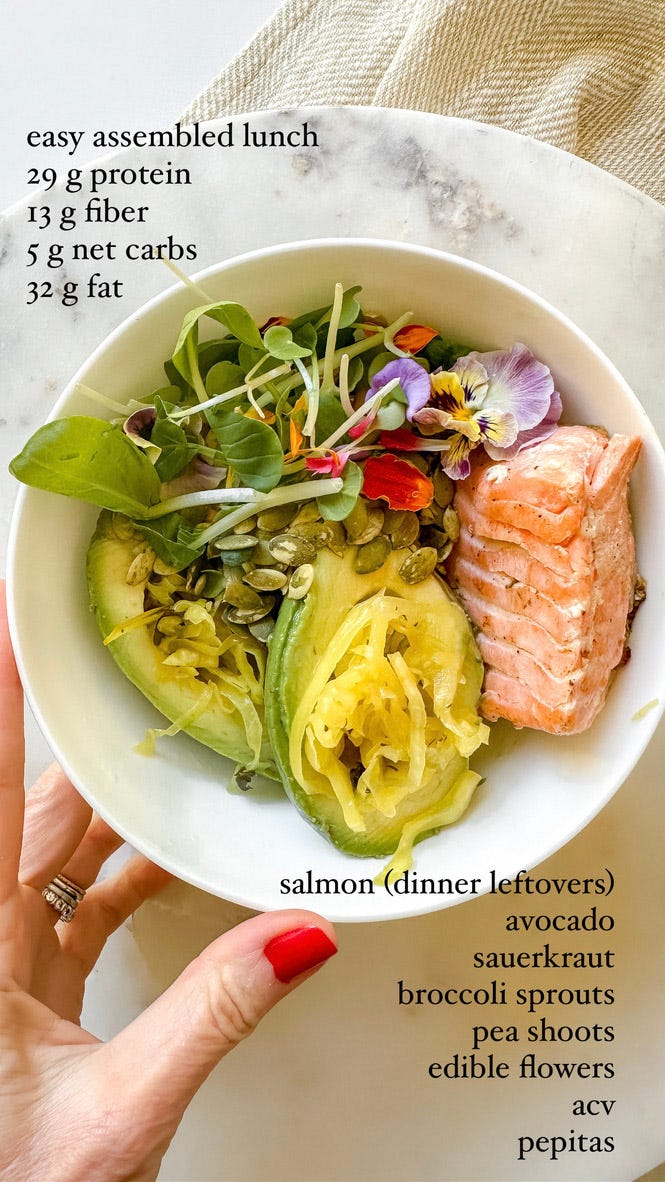
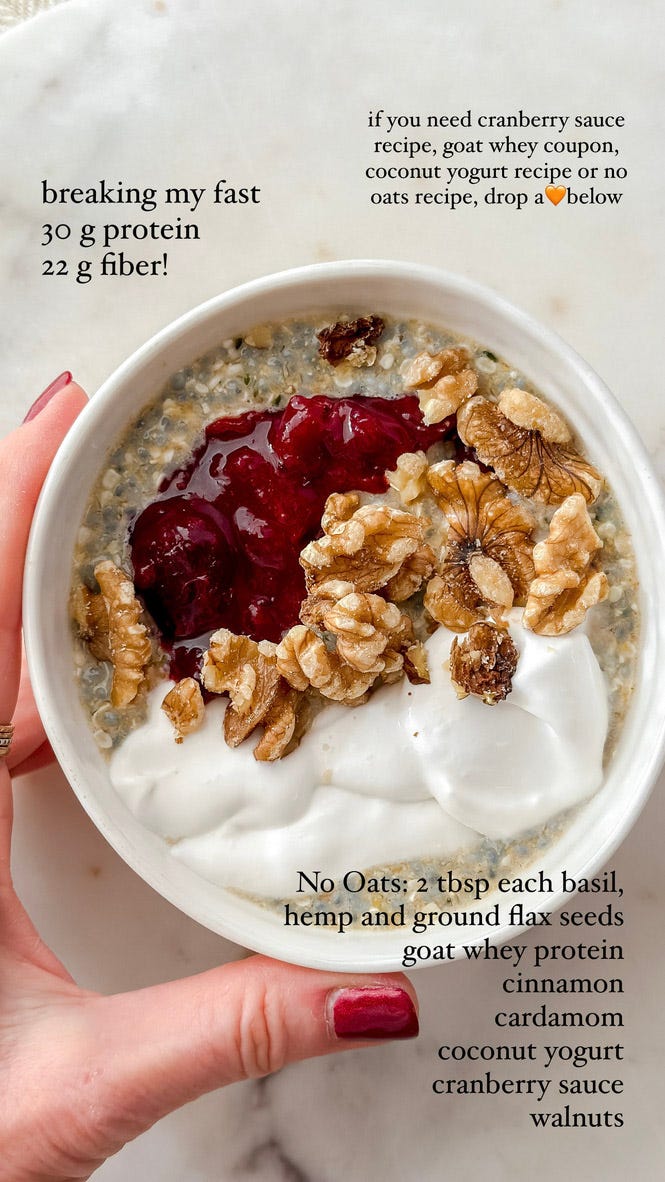
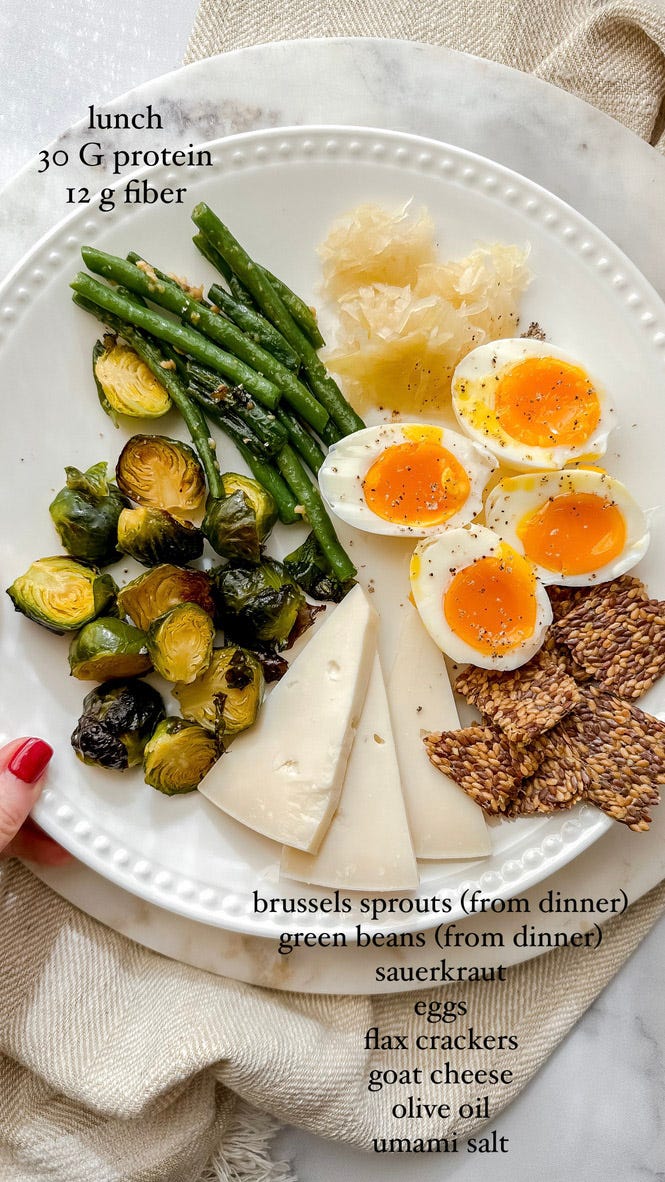

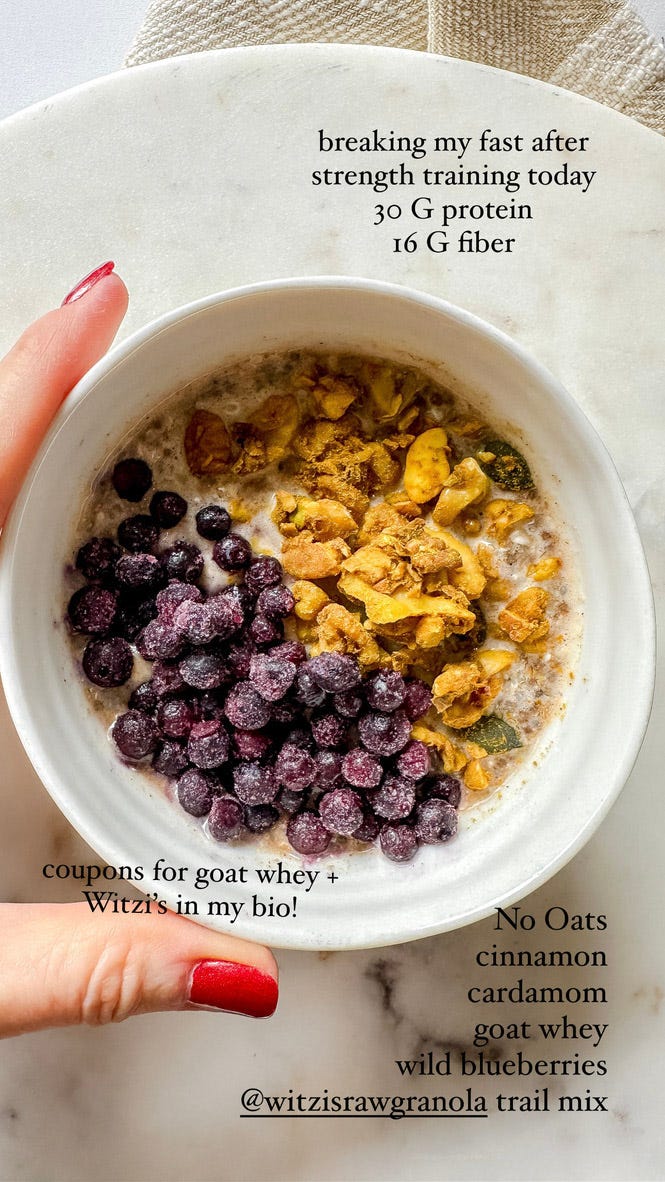

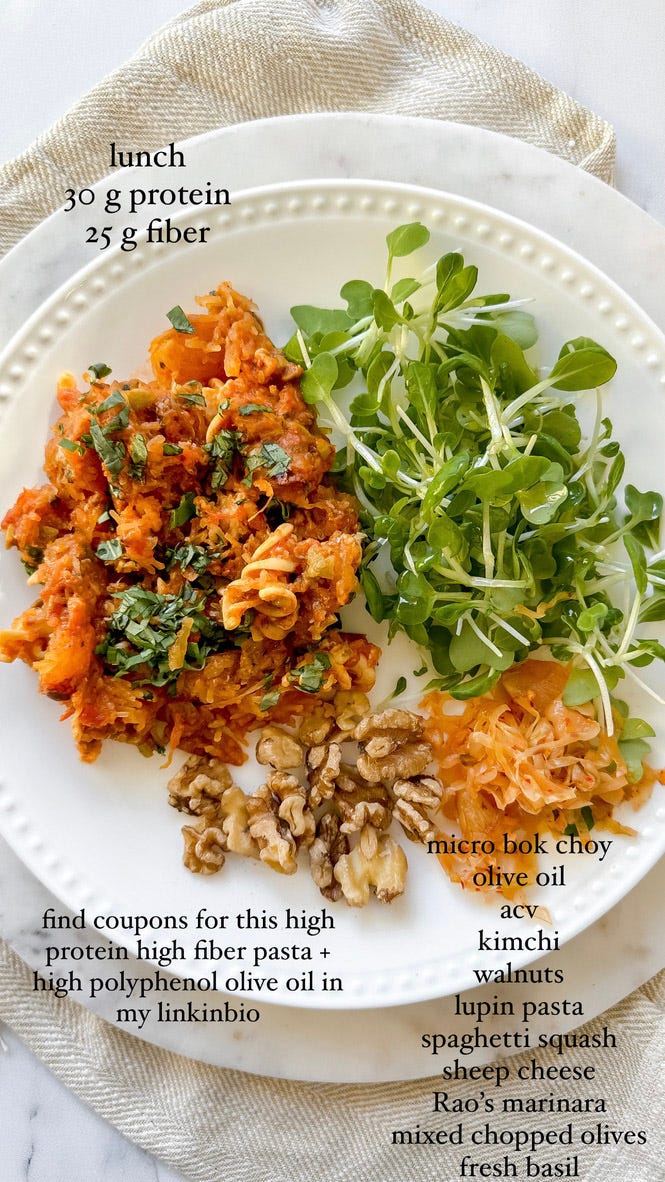
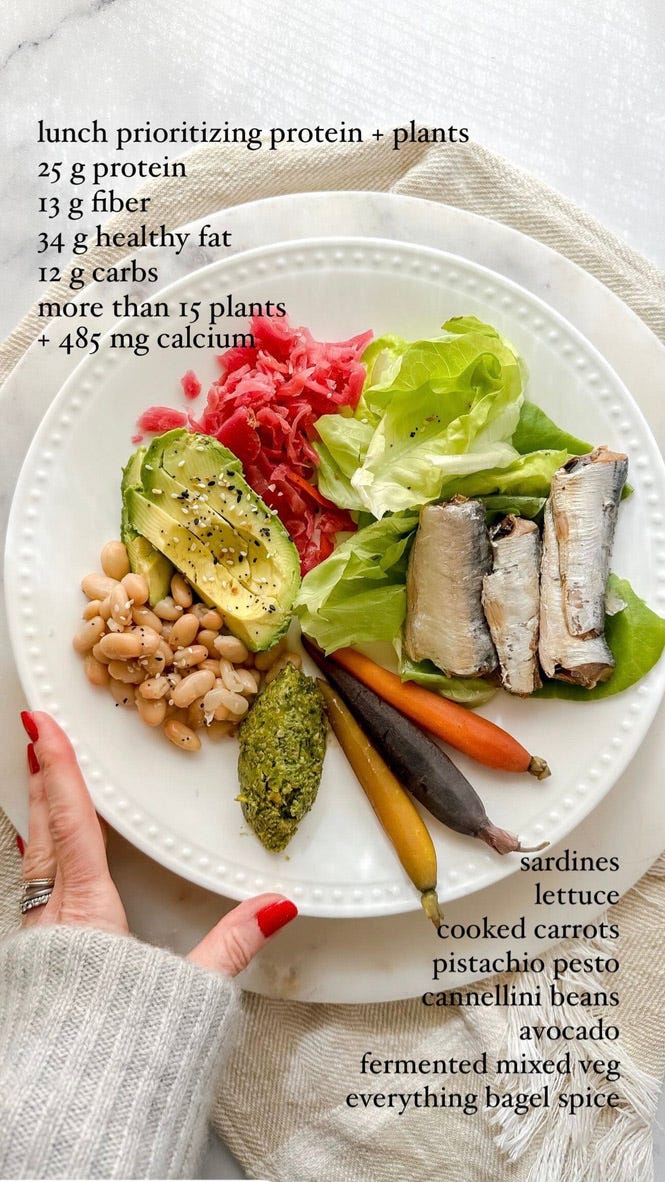
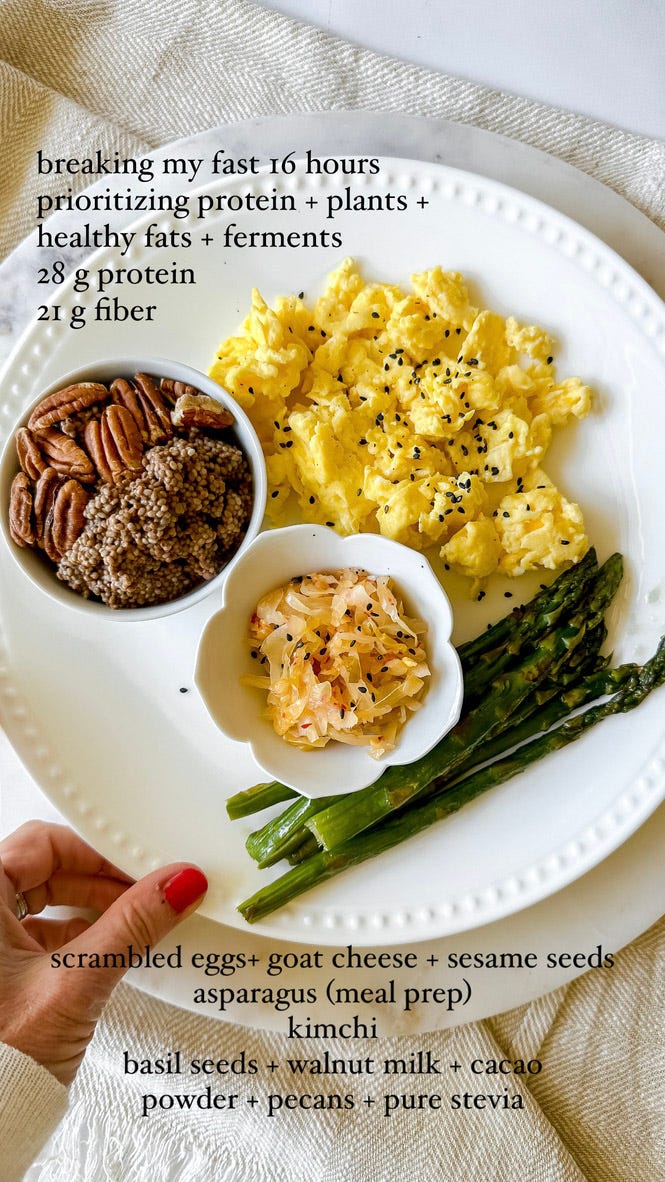
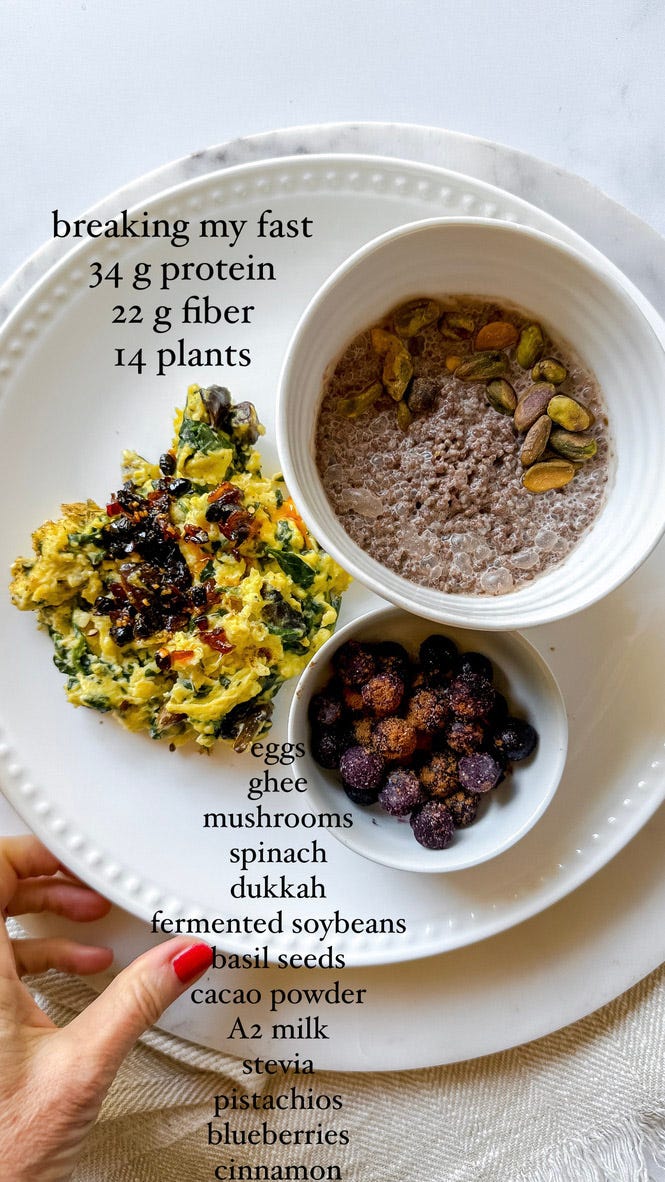
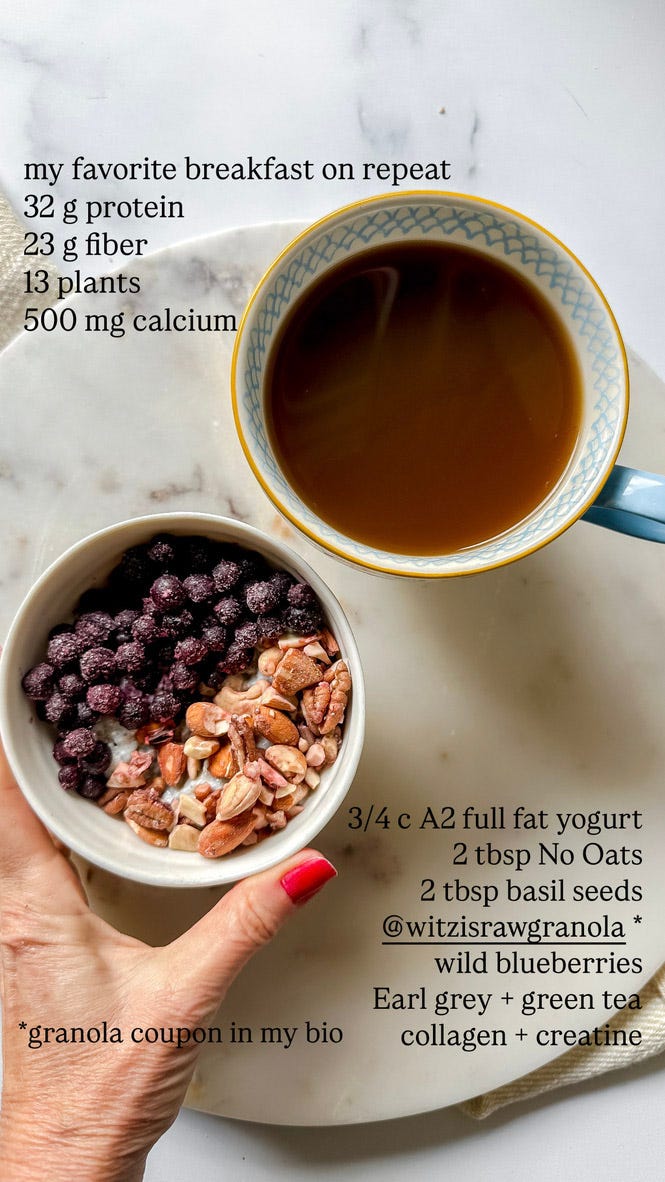






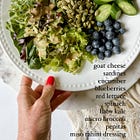
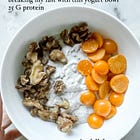

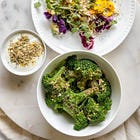
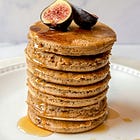



Hi Beth
My husband and I have been making an eating your no oats recipe quite often over the past several months.
I’ve been wearing a CGM for 5+ years, becoming prediabetic at menopause.
I of course, do well glucose wise with the no oats, particularly when adding protein powder, but over the last six weeks I’ve been fighting constipation and have been working to amp up the fiber considerably. Crazy but I just haven’t tracked fiber like I’ve tracked protein or carbs.
It’s quite an interesting journey, particularly when I think I’m eating veggie forward meals with what seems like a lot of seeds and nuts.
I’ve been doing a serious tracking experiment with ChatGPT this past week as I am currently not wearing a CGM. I have a question about the photo in your post today that list your favorite typical breakfast so is that additional seeds that you have added? I plan to go back and look more closely at this post as well as do a bit more deep diving into how to get enough fiber when you’re pushing the protein.
Thanks for wading through this message Beth!
Enjoyed seeing all these photos and unique ways to pack in fiber! Your creativity is definitely shining through and I love it!